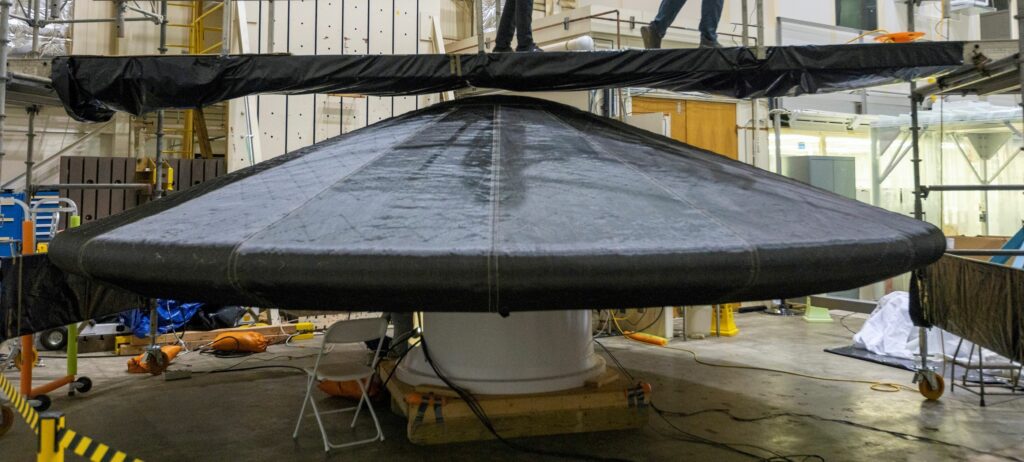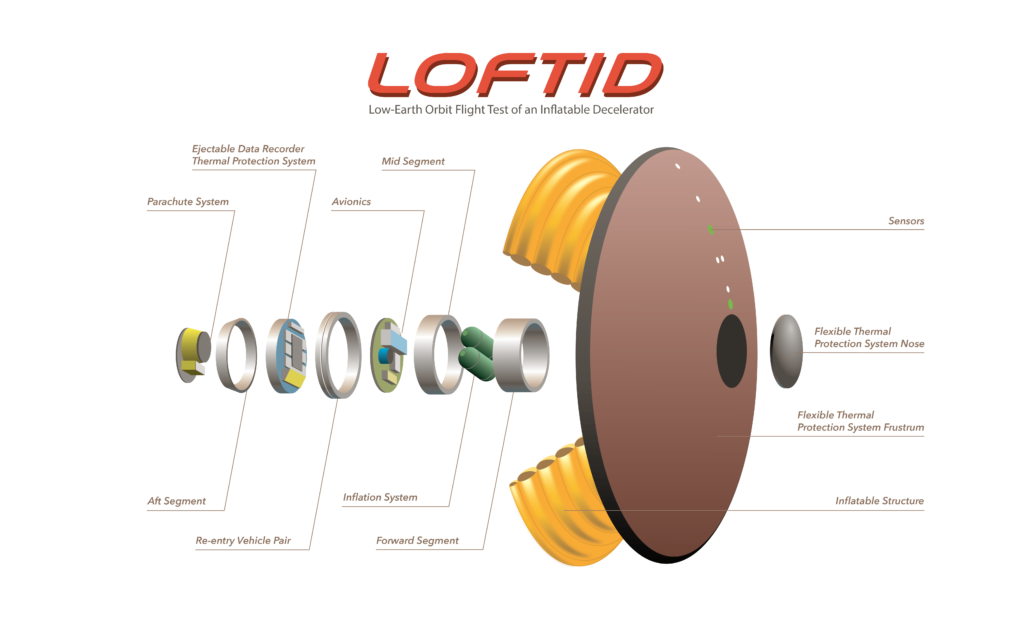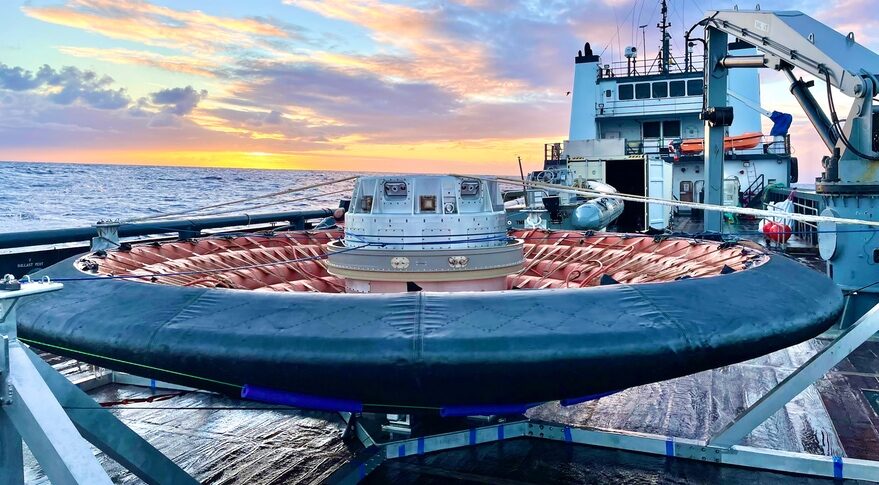The test of the inflatable heat shield LOFTID (Low-Earth Orbit Flight Test of an Inflatable Decelerator) created by NASA was a success. This was announced by the project developers at a press conference held on November 17.
How to deliver a lot of cargo to Mars?
The red planet has a very rarefied atmosphere, which creates significant difficulties for designers of space missions. On the one hand, they need to equip descent vehicles with thermal protection, which significantly increases their mass. On the other hand, due to the low density of the atmosphere, parachutes alone are not enough to reduce the speed to a safe value. Therefore, to repay it, engineers have to use engines, which increases the complexity of the design and at the same time reduces the amount of payload.

One of the possible solutions to the problem is to equip the Martian descent vehicles with heat shields with an inflatable structure. Due to the larger area, such a device is able to significantly enhance the braking effect created by the local atmosphere and ensure the landing of larger loads than a traditional screen.
Inflatable heat shield design
The LOFTID heat shield was created by NASA in order to test the operability of this concept. Its diameter is 6 meters. It consists of an inflatable structure and a four-layer flexible thermal protection. Outside there is a fabric made of silicon carbide threads, under it there are two layers of thermal insulation and a gas-tight barrier. As for the inflatable structure, it is a multilayer ring assembly woven from a synthetic polymer capable of retaining its shape when inflated.

Successful LOFTID test
The LOFTID test took place on November 10. It was launched into orbit by an Atlas V rocket, after which it entered the atmosphere over the Pacific Ocean at a speed of 7.9 km/s. Subsequently, the search vessel managed to pick up both the LOFTID and the flight recorder (it was shot off during the descent in case the screen was lost).

Despite the fact that engineers have yet to conduct a detailed analysis of the data obtained, even a preliminary analysis shows that the test was a success. LOFTID coped with the task and looks “untouched” — all the damage noticed was not received during re-entry into the atmosphere, but during the landing. According to experts, the screen is quite suitable for reuse.
In the future, NASA plans to conduct new tests using larger inflatable structures. The fact is that according to experts, manned Martian missions will require screens with diameters over 20 meters. Therefore, the main efforts of engineers will be focused on the development of construction technologies and testing of structures of such impressive dimensions.
According to https://spacenews.com
Follow us on Twitter to get the most interesting space news in time
https://twitter.com/ust_magazine

